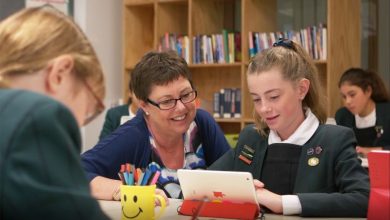Supporting Pāsifika student engagement

Teachers of intermediate-aged Pāsifika students are being encouraged to include more cultural components into their teaching to ensure young adolescents stay engaged with learning throughout secondary school.
Massey University PhD graduate (education) Dr Alet van Vuuren, a registered psychologist for the Ministry of Education (MoE), explored factors facilitating the engagement in learning of Pāsifika students at intermediate school level.
Her study showed the positive difference to student engagement when teachers include critical cultural content into classroom practices.
She says her doctoral study supports a move for culturally strengthened teacher engagement with Pāsifika students at intermediate level as a way to foster higher levels of achievement at secondary school and tertiary levels.
“Despite considerable effort to improve student engagement, achievement and performance outcomes within the required inclusive educational contexts, a significant number of Pāsifika students still leave school without any formal qualifications,” she says. “Although 80 per cent of Pāsifika students stay at school until the age of 17, they do not necessarily achieve high enough qualifications to guide them into the workforce or tertiary education.”
Feeding the roots model empowers Pāsifika engagement
Dr van Vuuren’s study, supervised by associate professors at Massey University, generated a cultural assessment tool, called the Feeding the Roots Model of Pāsifika Student Engagement. It is designed to help teachers understand the importance of acknowledging critical cultural components when engaging Pāsifika students in learning. She interviewed students, staff teacher aides, Resource Teachers of Learning and Behaviour (RTLB) and parents at a South Auckland intermediate school where 52 per cent of the students were from Pāsifika backgrounds.
What surprised her was that the ethnicity of teachers played no role in Pāsifika student engagement. Her survey showed palagi (non-Pasifika) teachers who were deliberately teaching with more cultural awareness and understanding, achieved the highest levels of Pāsifika student engagement.
This highlights a need for all teachers to understanding the value of incorporating their cultural competency to address ethnic diversity in their classrooms, especially in South Auckland, where there are an estimated 168 different nationalities and ethnicities, she says.
National statistics reveal that the reading levels of Pāsifika students in New Zealand schools drop to lower levels once they leave primary school. The many possible reasons intrigued her. For example, could it be that students felt more supported at primary school? Could students at intermediate level experience challenges such as entering young adolescence and also a change in the delivery of education, with rostered classes and more teachers?
Government policy needed to back Pāsifika education support
While there is a broad awareness in the education system for finding ways to support and improve learning outcomes for Pāsifika students, more work is needed to bolster teachers’ understanding and skills in teaching culturally diverse classes, she says.
Dr van Vuuren says she doesn’t identify as an expert who could speak on behalf of Pāsifika, but perceives her research as “a cultural assessment tool to support culturally appropriate and culturally responsive systems in which Pāsifika students operate.”









